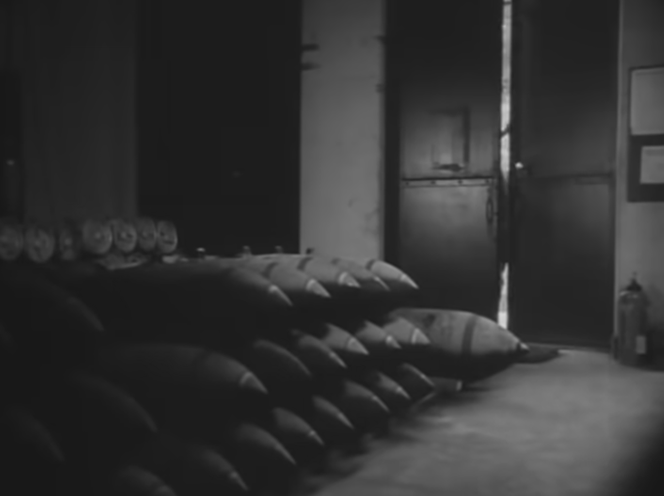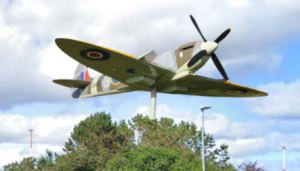Site 15. RAF Wick Munitions Stores
The bomb stores for RAF Wick were situated to the north of the airfield, as far removed from other areas as possible for safety. They comprised two groups of six hardened stores, each surrounded by thick earth and concrete embankments. These were designed to contain any explosion should a bomb accidentally detonate. Two other buildings called ‘Component Stores’, where the fuzes were kept, are situated at a distance from the main munitions compounds. These are also surrounded by a thick earth and concrete blast wall. To the west of the site are two stores for incendiary bombs which are also surrounded by thick blast walls and connected by a concrete gantry.


RAF Wick was built in late 1939 at the end of what is known as the “Expansion Period” of the RAF. These bomb stores are considered to be one of the most intact examples from this time remaining in the UK. Many of the buildings retain their original heavy steel blast doors and bomb loading gantries and have been designated a scheduled monument of national importance by Historic Environment Scotland.
During the Second World War RAF Wick was a very busy station and was in use continuously from the outbreak of the war. It started life with Fighter Command, and its squadrons were responsible for protecting the skies over the large naval base at Scapa Flow in Orkney. This was the anchorage for Britain’s Home Fleet during the war. These squadrons, with their Blackburn Rocs and Skuas, and Hawker Hurricanes saw considerable combat in the first year of the war against the many Luftwaffe bombing raids directed against Scapa Flow. These aircraft were a daily sight over the town.
In mid-1940 fighter operations were moved to the newly completed airfield at Castletown and Wick became a Sector Station of Coastal Command. Under this new command it carried out anti-submarine patrols over the North Atlantic and North Sea and its squadrons also saw a considerable amount of action against Axis shipping and land-based targets in occupied Norway.





For these activities a variety of munitions were needed and these were all housed in the bomb stores. The weapons kept at RAF Wick included 250 lb and 500 lb (110 Kg and 220 Kg) General Purpose high explosive bombs, incendiary bombs, rocket projectiles, aerial torpedoes, and air-dropped sea mines.
The ground crews who worked here were involved in arming the wide array of aircraft types that operated out of RAF Wick between 1939 and 1945. These included the Armstrong Whitworth Whitley, Avro Anson, Blackburn Roc and Skua, Boeing Flying Fortress, Bristol Beaufighter, Beaufort, and Blenheim, Consolidated Catalina, de Havilland Mosquito, Handley Page Halifax and Hampden, Hawker Hurricane, Lockheed Hudson and Ventura, North American Mustang, Supermarine Spitfire, and the Vickers Warwick and Wellington.
The site is private property so unfortunately there is NO PUBLIC ACCESS.



